Search
Did you mean: Byzantium?
Search Results
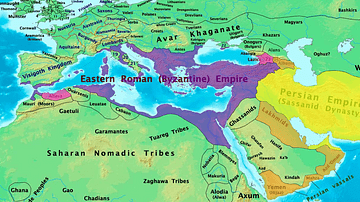
Image
Byzantine & Persian Empires in the 7th Century
A map showing the extent of the Byzantine Empire and the Sasanian Empire in the 7th century.
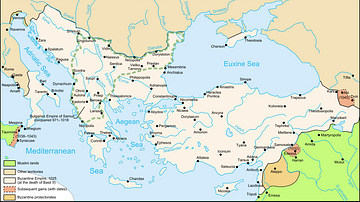
Image
Byzantine Empire, 1025 CE
A map of the Byzantine empire in 1025 CE at the death of Basil II (r. 976-1025 CE).
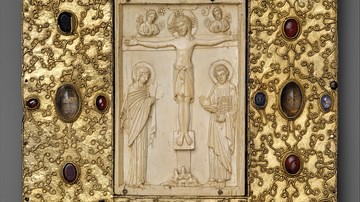
Image
Byzantine Book Cover with Icon
A Byzantine book cover with an ivory icon of the crucifixion. Gilded silver with crystal, glass and sapphire cabochons. Constantinople, 11th century.
Metropolitan Museum of Art, New York.
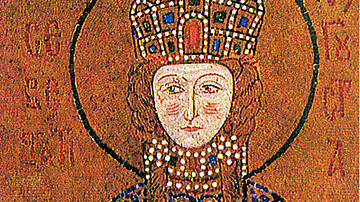
Image
Byzantine Empress Irene
Depiction of Byzantine Empress Irene, the wife of Emperor John II (r. 1118-1143 CE) as found in the Hagia Sophia in modern-day Istanbul (previously Constantinople), Turkey.

Image
Byzantine Empire c. 460 CE
A map indicating the Byzantine Empire (aka Eastern Roman Empire) c. 460 CE during the reign of Leo I (457-474 CE)
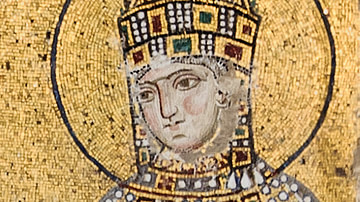
Image
Byzantine Empress Zoe
Mosaic from the Hagia Sophia in modern-day Istanbul (previously Constantinople), Turkey, depicting Zoe, empress of the Byzantine Empire from 1028-1050 CE. She was the daughter of Constantine VIII (r. 1025-1028 CE).
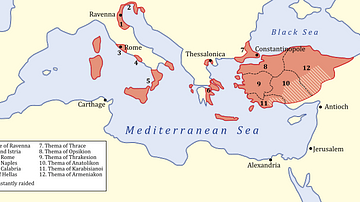
Image
Byzantine Empire, 717 CE
A map of the Byzantine empire and its themes and provinces in 717 CE.

Image
Byzantine Mosaic of Children Seated on a Dromedary
Two children are seated on a dromedary. One of them wears a wreath around his head and is holding a bird in one hand and reins with the other hand. There is also a guide in front of them. Period: Early Byzantine, c. 6th century CE. Place...
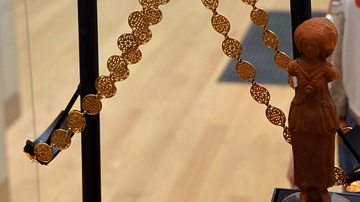
Image
Byzantine Gold Body Chain
This body chains of linked medallions is the largest item of jewellery to survive from the Byzantine Empire. It would have been worn draped over the shoulders and around the hips. In Greek and Roman art, body chains were often associated...
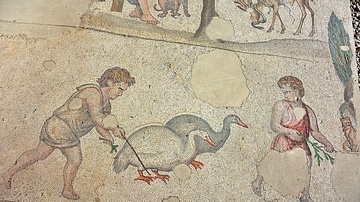
Image
Byzantine Gooseherd Mosaic
The gooseherd: A boy and a girl herding two geese are depicted in this mosaic. Great Palace Mosaic Museum, Istanbul, Turkey. Period: Early Byzantine, circa 6th. century CE. Place: Constantinople, (Modern Istanbul, Turkey). Great Palace Mosaic...